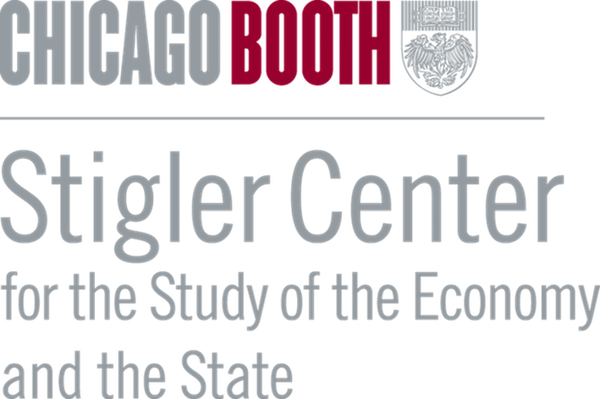Victor Oliveira Fernandes analyzes the contributions to digital market regulation presented in Brazil’s Fair Competition Act for Digital Markets. The proposed act reflects a careful balance between antitrust orthodoxy and innovation and, in its success or failure, will pave the way for additional digital regulation in the Global South.
Brazil’s new digital competition proposal reveals how those countries who have not yet developed national tech giants or the legal framework to guardrail their impact on the political economy can transform regulatory disadvantage into strategic opportunity. In September, the Brazilian government submitted the Fair Competition Act for Digital Markets (Bill 4675-2025) to the National Congress. The proposal emerged from extensive public consultation throughout 2024, culminating in the Ministry of Finance’s final report: “Digital Platforms: Competition Aspects and Regulatory Recommendations for Brazil.”
Brazil’s regulatory lag behind high-income countries that have already established their own competition laws and rules for the digital economy has become its tactical advantage. Drafting legislation years after the European Union’s 2022 Digital Markets Act (DMA), Germany’s 2021 Section 19a amendment to its competition law, and the United Kingdom’s Digital Markets, Competition and Consumers Act 2024 (DMCC)—all carefully discussed in the Ministry of Finance’s final report—positions Brazil to absorb lessons from these early experiments while navigating an increasingly fragmented global landscape marked by geopolitical tensions. Though congressional debate may yet reshape The Fair Competition Act, the bill’s current form merits close analysis.
The bill’s architecture reveals Brazil threading a careful needle between institutional pragmatism and normative revolution. This balance manifests across two key dimensions: the uneasy coexistence of novel regulatory objectives with orthodox antitrust values and the preference for negotiated solutions over rigid prescriptive rules. The framework captures the enduring friction between ambitious reform and operational constraints, yielding solutions distinctively Brazilian in their calibrated boldness.
Legislative architecture and normative goals
Brazil’s proposal performs an audacious legal experiment: housing two competing ideological frameworks within the walls of a single statute. The Brazilian Competition Law Framework was originally built as a monument to the consumer welfare standard and its focus on efficiencies. It adopted provisions establishing the “as-efficient competitor” principle and efficiency-balancing tests. The Fair Competition Act’s proposed Article 47-B disrupts the orthodoxy of the consumer welfare standard by introducing three normative objectives sharply divergent : “reducing barriers to entry,” “protecting [the] competitive processes,” and “promoting freedom of choice.”
These goals echo principles embedded in foreign ex-ante legislation, which aims to protect against potential harms to competition rather than weigh the efficiencies of a potentially anticompetitive act on a case-by-case basis after it has occurred (ex-post). “Reducing barriers to entry” aligns with the EU DMA’s contestability principle, while “promoting freedom of choice” mirrors the U.K. DMCC’s “open choices” objective. “Protecting the competitive process” embodies an approach maybe more consistent with the European legal tradition of protecting fair competition that has also partially influenced broader developments in Brazil’s competition law. Yet these objectives represent more than borrowed concepts. They reflect a fundamental shift toward an ecosystem-based approach that recognizes how advantages in unique markets like social media, mobile operational systems and advertising can reinforce one another. These objectives acknowledge that digital platforms orchestrate, rather than merely participate in, markets.
This ecosystem orientation—and the virtues of being a latecomer to digital market regulation— becomes evident when contrasted with the 2022 “Brazilian DMA” draft’s misreading of digital markets. That initial attempt treated digital markets as public utilities, placing the telecommunications regulator at the center of the digital markets regulatory framework. This neglected the fact that large platforms create value through cross-market network effects. They do not operate as static infrastructure requiring traditional utility-style oversight. This made a regulatory framework empowering Brazil’s national telecommunications agency as the primary regulator a poor fit to oversee the complex, rapidly evolving nature of digital competition. The Fair Competition Act course corrects, signaling strong alignment with an ecosystem approach.
The Fair Competition Act also bears a more vocal contribution from Brazil’s competition regulator, the Administrative Council for Economic Defense (CADE). CADE had submitted that “ex-ante regulation of platforms should address dysfunctions in digital ecosystems, such as functional and distributive failures that affect the generation and appropriation of value, which are distinct from market failures in traditional regulated sectors”.
The memorandum explaining the new bill is telling: “ecosystems” appears five times. It also clarifies that imposing “special obligations” on gatekeepers—the Big Tech giants that control access to digital markets—seeks to ensure “market access to all other economic agents dependent on the ecosystems created by these digital platforms.”
The ecosystem approach is also reflected in the architecture of the gatekeeper designation process itself. Section 47-C’s criteria for identifying “economic agents of systemic relevance” (i.e., the gatekeepers), are based on both quantitative and qualitative measures. Quantitatively, the revenue thresholds to qualify for gatekeeper status are 50 billion reais globally or five billion reais domestically (approximately USD $9 billion and $900 million respectively). These are necessary but insufficient conditions. The real scrutiny lies in the three qualitative factors: “network effects generating market power,” “strategic positioning that enables third-party businesses,” and “multi-product service integration.” They capture diagnostic features of ecosystem orchestrators beyond traditional dominance metrics.
Conspicuously absent from The Fair Competition Act is any reference to a “fairness” objective, despite the new proposal’s formal title. Critics might argue this omission constrains CADE’s authority to address platform-business contractual imbalances—particularly regarding service fees, revenue shares, or access pricing. Indeed, by avoiding fairness language, the proposal perhaps seeks to sidestep contentious questions about whether CADE should engage in price regulation and purely exploitative practices—territory from which Brazilian antitrust has historically distanced itself. Nevertheless, recent global enforcement experiences with ex-ante regulations suggests that reducing entry barriers and addressing fairness in commercial asymmetries may ultimately prove to be two sides of the same regulatory coin.
The proposal’s deeper significance lies in its potential spillover effects. By carving out a space where non-welfare objectives govern digital markets, Brazil creates a living counterexample to its own modern Chicago School foundations grounded in the consumer welfare standard. This departure from orthodoxy, though formally confined to platform regulation, may raise intriguing questions about whether traditional markets should remain immune from similar normative pluralism.
Structuring customized obligations for digital gatekeepers
Explicitly rejecting the EU’s DMA’s self-executing model, in which a long list of detailed obligations outlined in Article 5 automatically apply to designated gatekeepers, the Brazilian proposal charts a middle course between Germany’s Section 19a and the U.K.’s DMCC bill. Germany’s Section 19a requires its competition authority to first designate companies as having “paramount significance” and then evaluate case-by-case which specific conducts to prohibit, allowing companies to prove their practices are justified. Meanwhile, the DMCC establishes a dual approach with both preset “conduct requirements” (behavioral obligations) and broader “pro-competition interventions” that tackle underlying market power issues through ongoing investigation and tailored remedies like data portability and interoperability measures.
The Fair Competition Act operates through a two-stage process. Following gatekeeper designation, CADE’s Digital Markets Superintendency, which investigates potential harms to Brazil’s digital markets, initiates individual proceedings to define special obligations for each gatekeeper. The agency crafts tailored codes drawing from Section 47-E’s extensive catalog of sample obligations: principles awaiting contextual adaptation rather than rigid rules demanding immediate compliance.
While the sample provisions in Section 47-E are merely illustrative, their underlying logic reveals three distinct categories:
Transparency Requirements (Section 47-E(1)-(3)): Mandatory merger notification regardless of thresholds, operational disclosure including data practices, algorithms, and ranking criteria, and advance notification of terms modifications—all designed to address information asymmetries between platforms, regulators, and users.
Prohibited Conducts (Section 47-E(4)): Practices hindering competition through either defensive leveraging that restricts rivals’ market access (provisions a, b, f, g) or offensive leveraging that extends platform control through self-preferencing, bundling, and predatory pricing (provisions c, d, e, h).
Proactive Interventions (Section 47-E(5)): Interoperability and data portability measures, configuration flexibility enabling third-party applications as defaults, and complaint resolution mechanisms for business users—requirements that reshape platform architecture rather than merely constraining behavior.
A critical yet underexamined aspect of the proposal lies in its deliberate ambiguity regarding designation scope. The text remains silent on whether designation applies to economic groups as unified entities or to specific “core platform services.”
Section 47-E, § 1 (2) offers an elegant solution to this uncertainty by providing that specific duties “may be delimited to certain services or products offered by the designated economic agent.” This provision creates regulatory flexibility: CADE could designate an entire conglomerate while crafting distinct obligations for each platform or service within its ecosystem. This granular approach aligns perfectly with the proposal’s customization philosophy, allowing CADE to perform regulatory microsurgery rather than imposing uniform obligations across diverse services. More importantly, it sidesteps the self-compliance interpretation challenges that plagues rigid regulatory frameworks.
Questions will inevitably arise about the role of economics in shaping these obligations. Where the EU DMA provides extensive recitals refusing these arguments, Brazil’s proposal offers minimal guidance. Section 47-E, § 2 allows CADE to “consider” defenses based on “information security,” “legal compliance with other regimes,” and “technical product aspects enhancing ecosystem functionality.” Whether this list is exhaustive remains unclear, but its narrow scope suggests deliberate constraint. By limiting defenses to technical necessities rather than economic efficiencies, the proposal seeks to avoid the protracted debates over market definition and welfare trade-offs. That appears consistent with ex-ante regulation’s fundamental premise of escaping the analytical hurdles of the “more economic approach.”
Across all these dimensions, Brazil’s regulatory design reflects a strong dose of institutional realism. Self-executing rules would probably overwhelm CADE’s near-term capacity, forcing the agency to conduct simultaneous compliance workshops and start non-compliance proceedings across multiple gatekeepers. The proposed model instead builds on CADE’s proven expertise with negotiated commitments—agreements developed through structured dialogue and tailored to each business’s models. The envisioned regime then converts what could be an administrative impossibility into manageable case-by-case negotiations, reflecting an ex-post tradition.
The proposal leaves substantial operational questions for future regulation. It may prove particularly challenging for CADE, especially during the law’s nascent implementation phase, to conduct parallel designation proceedings for economic conglomerates operating across highly diverse sectors. Designation sequencing—whether targeting largest platforms first or selecting by enforcement feasibility—would produce distinct regulatory trajectories. While prioritizing major platforms could yield more immediate contestability benefits, the designation processes and obligation-setting procedures for large conglomerates would likely prove more protracted and resource intensive.
Similarly, stakeholder participation mechanisms remain subject to further specification. The legislation mandates public consultations and hearings to gather expert input during designation procedures and the definition of special obligations. However, it will ultimately fall to CADE to determine the weight accorded to these consultations and hearings in calibrating the obligations regime. This discretionary latitude raises questions about whether stakeholder input will meaningfully shape regulatory outcomes or serve merely as a procedural formality, particularly given the absence of explicit criteria for incorporating external perspectives into final determinations.
Conclusion
The proposed Fair Competition Act raises fundamental questions about how a legal system anchored in modern antitrust enterprise and its focus on efficiencies and prices can accommodate alternative normative objectives. The attempt to maintain dual regulatory regimes can result in a sustainable novelty or inherent instability. The civil law tradition’s reliance on statutory frameworks rather than judicial evolution adds another layer of complexity.
The bill’s relatively modest procedural adaptations offer a compelling laboratory test. If institutional pragmatism succeeds, it demonstrates that building resilient digital markets depends less on constructing expansive regulatory apparatuses than on establishing solid legal and economic principles which are then tailored to gatekeepers and their particular actions.
Conversely, if the influence of traditional antitrust values overrides the new regulatory goals, it will vindicate critics who warn against regulatory overreach. Though, if negotiated obligations prove ineffective against platform resistance, this could paradoxically strengthen the hand of those who argue for stringent ex-ante regulation, suggesting that Brazil’s attempt to avoid the DMA’s perceived rigidity may have undermined digital regulatory efforts and instead created an enforcement vacuum.
Should the Fair Competition Act be enacted, Brazil’s experience will serve as a critical reference point—whether cautionary or inspirational—for Global South jurisdictions facing a fundamental choice: pursuing incremental regulatory overlays that preserve orthodox antitrust principles for traditional markets while adding targeted digital rules (as Brazil attempts here), or acknowledging that meaningful platform governance requires dismantling and rebuilding their core competition law philosophy across all sectors.
Author Disclosure: The author serves as a commissioner at CADE’s Tribunal. The views and opinions expressed in this article are solely those of the author in his personal capacity and do not necessarily reflect the official positions or policies of CADE or its Tribunal. The author has not received any funding for this article or the underlying research.
Articles represent the opinions of their writers, not necessarily those of the University of Chicago, the Booth School of Business, or its faculty.
Subscribe here for ProMarket’s weekly newsletter, Special Interest, to stay up to date on ProMarket’s coverage of the political economy and other content from the Stigler Center.






